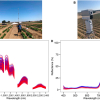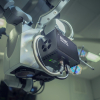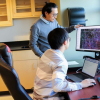As part of around €24.5 million in funding for the next three years, the Deutsche Forschungsgemeinschaft (DFG, German Research Foundation) will establish one new Clinical Research Unit and nine new Research Units. As all DFG Research Units, the new units will collaborate interdisciplinarly and span multiple locations.
Among the new Research Units are three that may be of interest to readers (in alphabetical order by Host University).
The Research Unit “Charmonium Physics Experiments with the BES III Detector” intends to investigate the physics of charmonium at the Beijing Electron Positron Collider. Charmonium is a bound system of a charm quark and an anticharm quark which could help to confirm the theory of strong interaction as part of the Standard Model of elementary particle physics. The energy and mass of charmonium states lie within a transitional range in which so-called “exotic states” have been discovered in recent years. The particle physicists plan to measure charmonium in order to identify currently unknown but possible exotic states of matter such as glueballs, tetraquarks and meson molecules. (Spokesperson: Prof. Dr Ulrich Wiedner, Host University: Ruhr-Universität Bochum.)
Soils are made of components called aggregates of different sizes. The microarchitecture of these aggregates determines the structure of the soil and influences its characteristics. The Research Unit “Microaggregates: Formation and Turnover of the Structural Building Blocks of Soils (MAD Soil)” will investigate the function of these microaggregates (structures of less than 250 µm), which consist of mineral and organic components, using state-of-the-art imaging and analytical techniques. The group aims to understand how the structure of microaggregates develops spatially and over time and what impact the soil microarchitecture has on the key functions of soil, such as carbon and water transport and nutrient storage. (Spokesperson: Prof. Dr Kai Uwe Totsche, Host University: Friedrich-Schiller-Universität Jena.)
As small as a credit card but as functional as a full-size laboratory: “microlaboratories” have enormous practical benefits because they allow chemical processes to be analysed quickly, with low resource usage, and without substantial equipment, in remote regions of the world. The Research Unit “Integrated Chemical Microlaboratories” brings together experts in analytical and synthetic-organic chemistry to advance this “lab-on-a-chip” technology by combining chemical microsynthesis and miniaturised analytics. The intention is to build microlaboratories which offer better performance than previous methods and permit new insights into chemical processes. These could be used to develop new pharmaceutical active ingredients or minimise the energy and resource consumption of high-throughput chemical processes, for example. (Spokesperson: Prof. Dr rer. nat. Detlev Belder, Host University: Universität Leipzig.)













